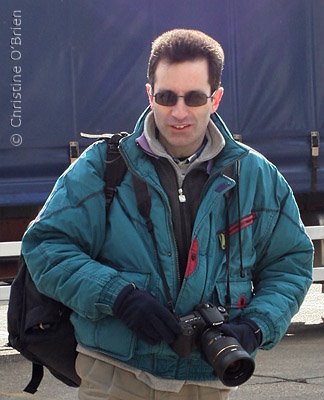Travelling light (part 1) - image storage on the move

Like many people I spent part of the summer travelling away from home, to new and unfamiliar places. In my case this wasn't a family holiday but a photographic trip, so I intended to spend most of the time taking pictures, and would therefore expect to have hundreds or even thousands of images to store by the time I came back. One of the big advantages of digital capture is that you can take as many images as you like, unhindered by thoughts of cost (or anything else for that matter), and I see no reason why this should be any different when away from home. But to many people this poses a problem. What do you do with the images once your card is full.
Well you could buy more cards, and for those who are taking just a few images during a whole trip that may be enough. But for the serious photographer that would require too many cards and so be an expensive option. You could travel with a laptop, and some people do. But I wanted the flexibility to use all my luggage space for photographic gear, and not computers, so I needed something else. A few years ago I bought something called an "Image Tank" - a make of downloader, or image storage device.
It was a fairly simple device with only the minimum number of buttons. There was no way to view or verify images on the device, as it had no screen but only a simple LCD status display. I used this device until last year. I was in Norway and downloaded some images from a Microdrive. The Image Tank showed that a problem had occurred with the download, but I didn't know what the problem was. I continued to download throughout the rest of the trip, although I avoided using the Microdrive again. It was only when I returned to England that I found out that all the subsequent downloads had been corrupted. Luckily I still had most of the images elsewhere.
This year when I travelled to Spain I took two downloaders. The Image Tank was not used. Of the devices used on that trip, one is similar to the Image Tank (but lighter and with a shorter download time) and has no screen. The other has a 3.6" colour display, on which the images can be viewed and therefore verified. Each evening I would download to the device with the colour screen, go through all the images to check that they where OK and then download to the other device as backup. Only once this was done where the cards re-formatted. The two devices were kept separate at all times, particularly when I was on the move. During the flight back one of the downloaders was stored in my camera bag and the other in my coat pocket. Neither was entrusted to the gentle care of the baggage handlers.
In the next part I will go into more detail about the devices that I use, and some of the other options on the market.
Photo taken in the Sierra Nevada in September 2006

0 Comments:
Post a Comment
<< Home